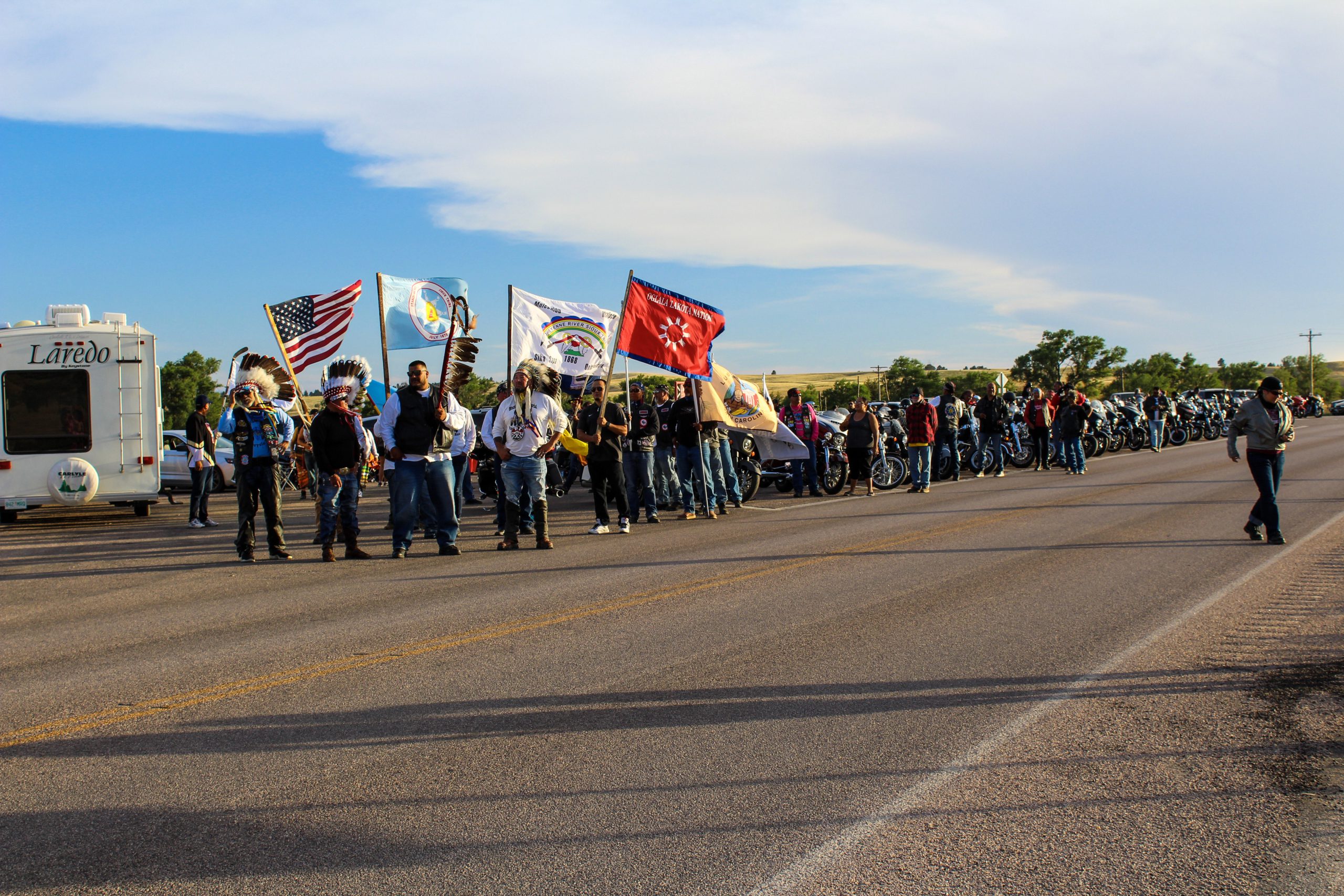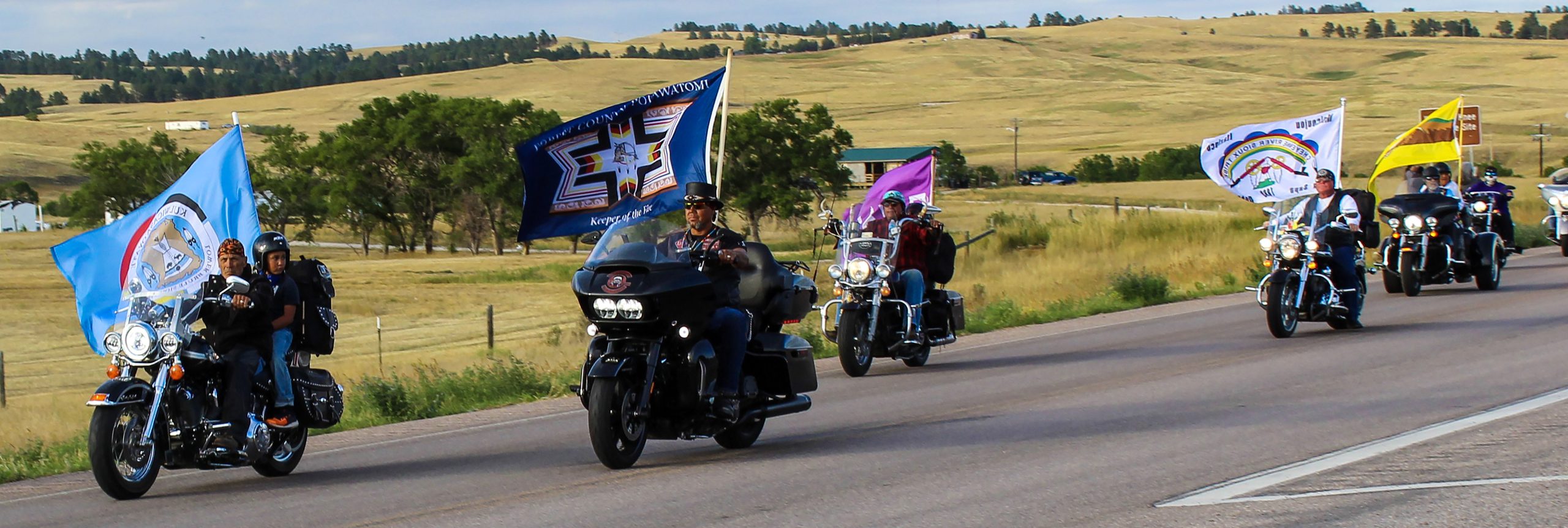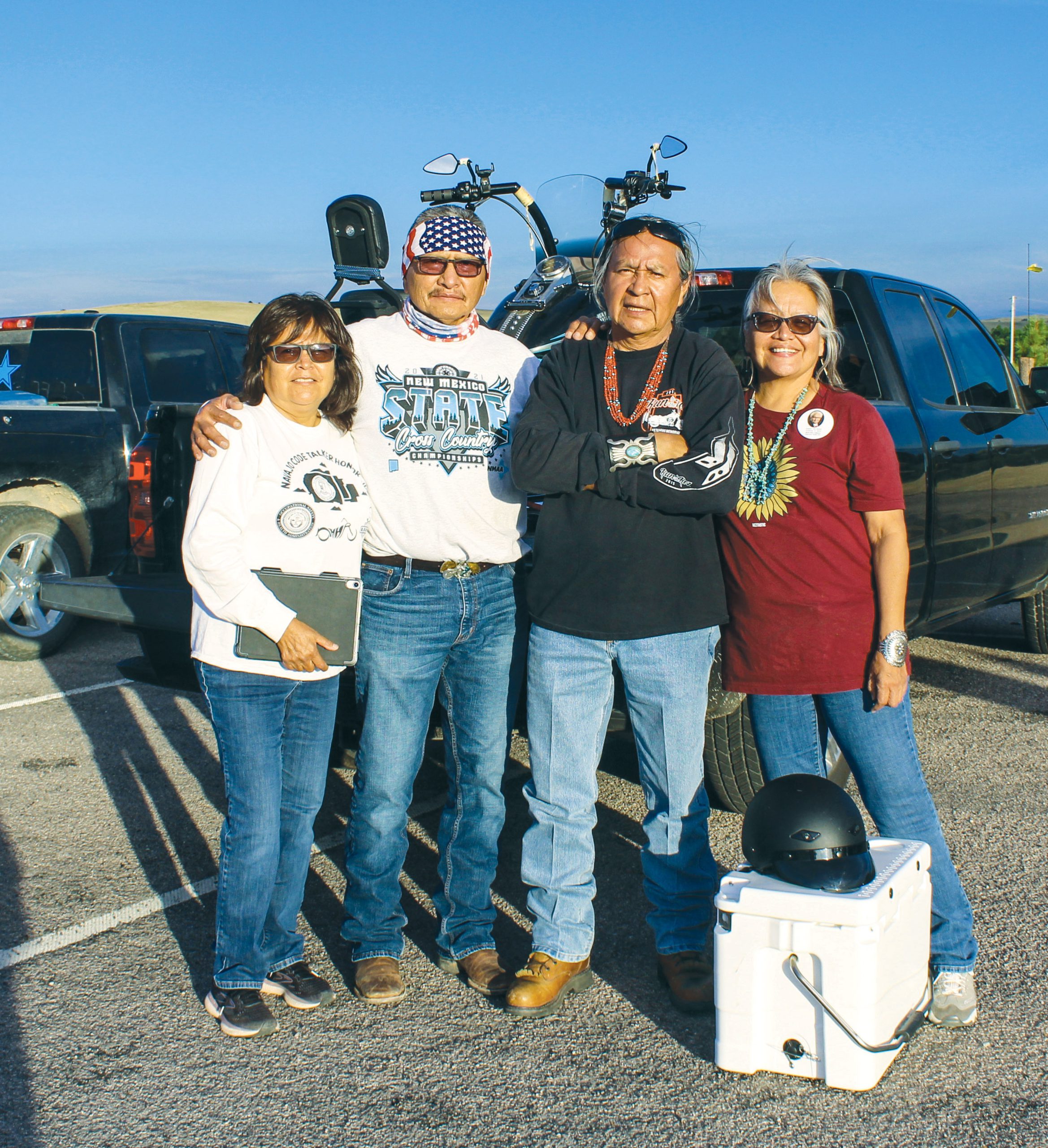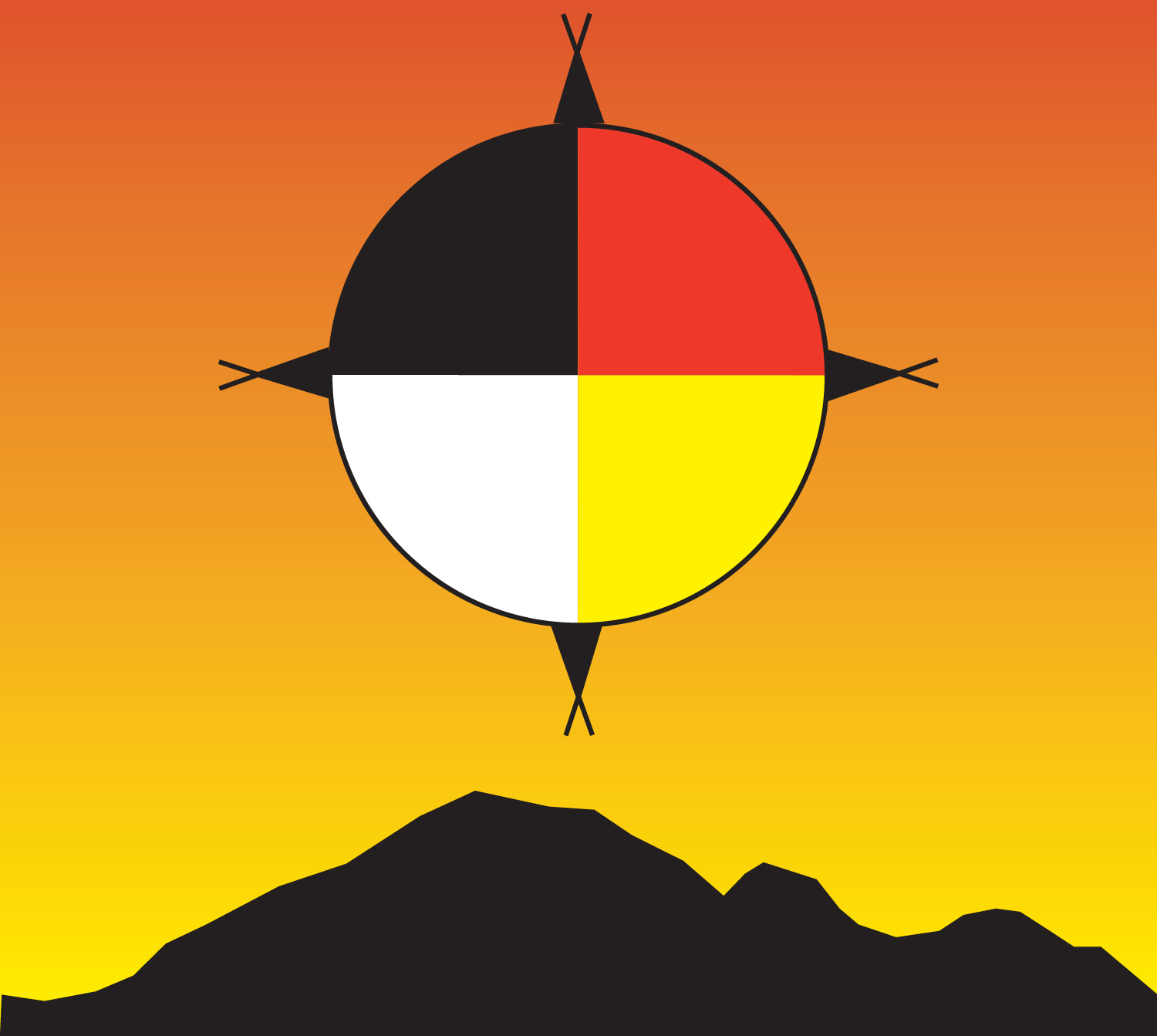Indianz.Com > News > Native Sun News Today: Memorial ride honors lives lost at Wounded Knee

They rode with a mission
To pay homage to the ancestors who died at Wounded Knee
Wednesday, August 24, 2022
Native Sun News Today Assistant Editor
WOUNDED KNEE – On Saturday evening, August 5, one could hear the low throaty growl of motorcycle engines coming from a distance.
As the riders approached the Wounded Knee massacre site the sounds of their engines turned to a roar. A roar that reminded onlookers that these bikers rode with a mission – a mission to preserve the memory of the innocent Lakota People who suffered and died on December 29, 1890.
As they drove onto the Wounded Knee site, echoes of drumbeats reverberated through the hillsides stained with the bloodshed of the followers of Hehaka Gleska (Spotted Elk) also known as Si Tanka or Big Foot. In December of 1890 Hehaka Gleska and a group of ghost dancers had left the Cheyenne River Indian Reservation shortly after Hunkpapa Itancun Tatanka Iyotaka (Chief Sitting Bull) was killed up north on the Standing Rock Reservation.


NATIVE SUN NEWS TODAY
Support Native media!
Read the rest of the story on Native Sun News Today: They rode with a mission
Contact Ernestine Anunkasan Hupa at cahunpigiwin@gmail.com
Note: Copyright permission Native Sun News Today
Search
Filed Under
Tags
More Headlines
Indian Country still on high alert over President Trump’s freeze on federal funding
Native America Calling: Federal funds under fire from President Donald Trump
Native America Calling: Balancing economic safety and development for payday loan businesses on tribal land
‘A step in the wrong direction’: President Trump’s funding freeze shakes up Indian Country
Native America Calling: From road access to ICE immigration raids, tribes are asserting sovereignty
President Trump’s ‘love’ for Lumbee Tribe only goes so far in fight for federal recognition
NAFOA: 5 Things You Need to Know this Week (January 27, 2025)
Chuck Hoskin: Cherokee Nation reaches trust settlement with United States
Native America Calling: Native American representation in television news
Native America Calling: Native youth building the foundation for future leadership
Republicans forced to defend record on Indian issues at start of new Congress
Native America Calling: How it started, how it’s going with Donald Trump
President Trump targets Indian education in first round of executive actions
House Committee on Natural Resources convenes for first meeting
Alaska Beacon: Republicans oppose President Trump on Native name change
More Headlines
Native America Calling: Federal funds under fire from President Donald Trump
Native America Calling: Balancing economic safety and development for payday loan businesses on tribal land
‘A step in the wrong direction’: President Trump’s funding freeze shakes up Indian Country
Native America Calling: From road access to ICE immigration raids, tribes are asserting sovereignty
President Trump’s ‘love’ for Lumbee Tribe only goes so far in fight for federal recognition
NAFOA: 5 Things You Need to Know this Week (January 27, 2025)
Chuck Hoskin: Cherokee Nation reaches trust settlement with United States
Native America Calling: Native American representation in television news
Native America Calling: Native youth building the foundation for future leadership
Republicans forced to defend record on Indian issues at start of new Congress
Native America Calling: How it started, how it’s going with Donald Trump
President Trump targets Indian education in first round of executive actions
House Committee on Natural Resources convenes for first meeting
Alaska Beacon: Republicans oppose President Trump on Native name change
More Headlines
